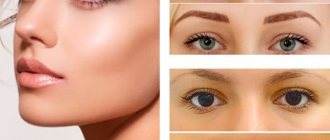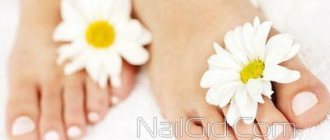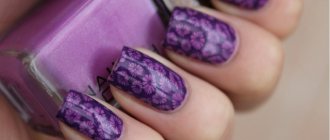Does the beauty of oriental women attract you? The surrounding riot of colors, clear arrows edging the eyes, and the alluring mystery in the gaze - all this enchants many. The East is a storehouse of contradictions and ideological limitations. How can a beauty attract attention if her body is hidden under a burqa, and only her eyes are open to prying eyes? Antimony will come to the rescue. "What is it?" - an inexperienced European will ask. The answer is simple - an excellent natural cosmetic for decorating the eyes, which can preserve youth, beauty and health. It is not for nothing that in eastern countries it is not only women who use antimony. You can easily see both men and children wearing eyeliner.
Meet antimony!
Have you noticed the Hindus, Arabs, Bedouins of the desert with eyeliner? It's antimony! What did Eastern men see in it, using the product on themselves not only for decoration, but also for therapeutic purposes? In the hot deserts of Africa, as well as in India, antimony was used to protect the eyes from sand, dust, and the scorching sun. The antiseptic properties of the product helped prevent the development of various infections of the visual organ. In Iran, for example, crushed black stone (the basis for the preparation of antimony) was used to treat burns. Thanks to this, people got rid of blisters. It was also placed along the edges of the wound to disinfect it and speed up healing.
So, a universal remedy that combines both cosmetic and therapeutic effects is antimony. How to use the eye product depends on its release form. It comes in the form of powder, pencil, paste in a tube. Antimony can vary in color: the palette starts from blue-black and ends with an almost colorless, light shade. Often it contains additional substances that enhance its properties. For example, camphor, cosmetic oils and herbal essences.
Antimony for the eyes: varieties
Each girl had about five or six types of antimony, with different compositions. They were used separately for applying daytime, holiday, and therapeutic makeup, as well as for relieving fatigue and cleansing the eyes once a week.
Eye antimony is used regardless of gender characteristics. It has neither an expiration date nor contraindications. A small amount of powder can last you for several years of use, which indicates its cost-effectiveness. And the benefits from it are much greater than from cosmetics sold today.
Moreover, antimony was known in ancient times. In eastern countries it is known that it was used three thousand years BC. In Ancient Egypt, back in the nineteenth century BC, antimony was used as a means for blackening eyebrows.
The Arabic name for antimony is kohl. The purpose of this product is not only to add brightness and expressiveness to the image, but also for daily care of the eyes, eyelashes and eyebrows.
Antimony powder is an excellent tool for creating daytime makeup. Due to the powder texture, it is applied in a thin layer, in the form of a line, modernizing the shape of the eyes, framing them with beautiful arrows.
This is an excellent tool for correcting the eyebrow line. With its help, you can change the eyebrow line, correct it, make it more expressive. In addition, antimony stimulates the growth of eyelashes and eyebrows.
If you use antimony daily, you will always appear to be wearing light makeup even if you have not applied makeup.
With the help of antimony you can easily experiment with makeup. You can make it light or, on the contrary, bright, highlighting your eyes. In its pure form, antimony has a fairly bright and rich black color. It is perfect for those with light eyes, making them expressive, and for those with dark eyes, antimony gives an unusually deep and attractive look.
Dry antimony is also applied to the lower eyelid along the mucous membrane at night to allow the eyes to rest and cleanse them.
It is worth noting that antimony also comes in soft shades - gray. It contains usma, which has an increased effect of stimulating the growth of eyelashes and eyebrows.
An additional therapeutic effect of this type of antimony is a slight tingling sensation at the time of application. This point is very useful. After all, when tears are released, the tear duct is additionally cleansed. Thanks to which the eyes become clean and white. It takes time to get used to this effect.
If you want to achieve both a bright decorative and therapeutic effect, then give preference to bright black antimony. She won't sting her eyes. It is mined from the shell of coal, while gray antimony is mined from its core.
Let's look deeper into etymology
In different languages, the same means has variations in names. When they say “kohl”, “kajal” (or “kujal”), “kayal”, they mean the same antimony. This word translated from Turkish means “blackening”. This applies to eyelashes and eyebrows. Other variations change their meaning somewhat. Thus, “kayal” from the ancient Assyro-Babylonian language is translated differently - “cosmetics”. The word “kajal” is most often used in relation to a soft antimony pencil. And when making antimony from coal, called black stone or kohl, a similar name is transferred to the eye product itself.
Causes of antimony poisoning
Antimony poisoning in the modern world occurs most often in industrial production conditions, as well as during the treatment of leishmaniasis. The toxic substance enters the body through the respiratory system and through the ingestion of antimony preparations. There are frequent cases of intoxication when using ointments that contain antimony compounds.
The semimetal is used in electrical engineering, in the paint and varnish industry, in the production of glass and matches, in pharmacology and cosmetology. Antimony drugs are used in the treatment of the parasitic disease leishmaniasis. Antimony trisulfide is used in veterinary medicine.
Is eye antimony related to the chemical element?
Cosmetic antimony has little in common with the chemical element of the same name. However, skeptics continue to ask: what is antimony? Such a chemical compound cannot be useful. In certain quantities, this metal is toxic to the human body, although it is invariably present in small doses. In addition, the role of this trace element in the development of living organisms is still unclear.
The semiconductor industry uses antimony itself. Its connections with lead are used to enhance the strength of the latter. In general, the addition of antimony to alloys and compounds with other elements gives the new resulting material additional properties, expanding its scope.
Benefits of antimony
Van Helmont's experiments Read more: Oligoelements
3.2 Benefits of antimony
Among the solar metals, antimony plays an equally significant role, since its symbol for alchemists is the Earth, our planet.
Alchemy is in many ways the inspiration for anthroposophic medicine: at one time, Rudolf Steiner recommended that Alexander von Bernus become interested in alchemical medicine. The latter, studying alchemy, came to the conclusion that there is something in antimony that resembles human will [3].
Antimony is a tertiary formation: its deposits are located in zones of motionless primeval rocks: Aude, Ariège, Vende - rocks that are formed by rocks of a new formation; Antimony therefore expresses the corresponding rejuvenation of our planet.
It is believed that the first to describe antimony was Vasily Valentin, who devoted an entire study to it, called “The Triumphal Chariot of Antimony.” The work was commented on by the Rosicrucians at the end of the 18th century in sufficient detail to enable one to appreciate the “almost universal power of antimony,” as Alexander von Bernus emphasized.
Here is one of these comments: “Antimony is an item from which all pharmaceuticals can be created, since it contains an emetic, laxative, blood purifier, sedative and diuretic. It is apenens and obstmens, solvens and coagulans, it is a balm, ointment and plaster in summa summarum: it can be used in all states of cum maximo usu fructu. She is the mistress of all diseases and the protector of human nature. When used correctly by a medical practitioner, it truly has virtus ubiquota."[4]
Paracelsus showed great interest in this remedy. Dr. R.A.B. Oosteruis noted that Paracelsus may have been the first physician to note that hepatic diseases were often preceded by what he called “stone-forming” diseases. When talking about rheumatic patients, the expression “rusty joints” is often mentioned, like “pipes with scale.” Paracelsus used antimony and its derivatives in the treatment of rheumatism and gout, and, it seems to us, achieved success in this. Significant success. Likewise, he attributed to antimony a blood purifying effect and the ability to improve liver function [6].
Of course, Basil Valentine and Paracelsus were the first to systematically use antimony. However, this metal was also sometimes prescribed by Egyptian doctors, Greek physicians, and Arab alchemists. It was subsequently used by Arnold of Villanova and Raymond Lulius.
The use of antimony was discontinued in the 19th century, and we owe the re-introduction of this drug to Alexander von Bernus. He drew, in particular, attention to a number of valuable characteristics of antimony, which are neglected by modern medicine: for example, the organic substances contained in this metal are extremely effective in the treatment of sleeping sickness.
Traditionally, antimony was first used as a therapeutic agent that increased the body's defenses. Perhaps it was for this reason that medieval alchemists called a small ball of antimony the “pill of eternity,” actively using it for therapeutic purposes. In his lectures on metals, Wilhelm Pelican insisted on the recognition that “due to its properties, antimony has the ability to set in motion certain structural forces of the body passing through the blood.” And Rudolf Steiner noted in one of his speeches that “a person, in essence, consists of antimony, if we abstract from everything that is introduced into him from the outside.”
Let's see how one of the anthroposophical physicians, Victor Bot, explains the fundamental role of this metal. His explanation, however, is presented in more modern terminology than that of his predecessors: “Antimony, crystallizing in luminous thin needles, has the ability to structure, especially in relation to protein. We can say that it acts in the body like an I (a thinking subject), which for a certain time can replace itself, allowing the body to gain new strength. Its combination with silver, called dyskrasite, is defined by patients as “overflowing” in its effects on both the psyche and the physical body.”
If antimony falls into the hands of a person unfamiliar with its esoteric and sacred meaning, this metal ceases to be something of a panacea (including for hysteria) and becomes dangerous due to its toxicity [7].
3.3 Medicines and poisons
At the beginning of the 16th century, poisons began to include not only salts of arsenic, copper and phosphorus, but also the juices of poisonous plants brought from the New World. Needles, perfumes, poison rings, poisoned gloves, underwear, cosmetics - much of what strikes our imagination when reading historical novels existed in reality. A. Pare, in his “Treatise on Poisons and Antidotes,” reported on Florentine craftsmen making perfumes and women’s jewelry containing poison. “These spirits must be avoided like the plague,” he wrote.
In Italy already in the middle of the 14th century. pharmacists had the right to sell poisons only to people they knew well. In Germany and France in the 15th century. the sale of poisons was prohibited, but let us remember: in the famous tragedy of William Shakespeare, Romeo goes to the pharmacy to buy poison. And although the pharmacist tells him that “the laws of Mantua punish the sale of poisons with death,” money quickly persuades him to break the law. Doctors were sometimes known not so much for their medical skills as for their recipes for antidotes, which were kept strictly secret.
The production of poisons was often attributed to alchemists. Their books were burned, and they themselves often died. A person could be persecuted for only one interest in works on alchemy [5].
Van Helmont's experiments Read more: Oligoelements
Information about the work “Fundamentals of iatrochemistry as a direction in medicine”
Section: Medicine, health Number of characters with spaces: 42398 Number of tables: 0 Number of images: 0
Similar works
Chemistry and medicine
63947
0
0
...raise, no more! This is one of the most difficult and promising problems in chemistry of the near future. I chose the topic “Chemistry is an ally of medicine” because I want to connect my future with the medical profession. You can write endlessly about chemistry and medicine, but the amount of work is limited, so I covered only what was especially interesting to me. I'm almost sure that thanks to this work it will be easier for me to master...
Technology as a sociocultural phenomenon
155813
0
0
...reality in science, styles of thinking that are formed in the context of culture and are influenced by its most diverse phenomena. This impact can be represented as the inclusion of various sociocultural factors in the process of generating scientific knowledge itself. However, the statement of connections between the objective and the subjective in any cognitive process and the need for a comprehensive study...
Alchemy as a cultural phenomenon
29477
0
1
..., having outlawed alchemy, at the same time patronized it, counting on the potential benefits that finding a way to obtain gold promised. As a result, European alchemy, like Alexandrian alchemy, was initially a hermetic science, accessible only to a narrow circle of initiates. This explains the extremely vague presentation of the results characteristic of European alchemy...
History of the development of dosage form technology
49630
0
0
...as "cooking", roasting, cooling, washing, "grinding" and mixing. He was familiar with chemical transformations in the form of fermentation, coagulation, dissolution, sublimation and others. 2.3 Development of drug technology during the Renaissance Renaissance medicine and pharmacy were characterized by a desire for experimental knowledge. In the struggle to create medicines based on precise chemical knowledge...
Secrets of making eye antimony
Naturally occurring antimony sulfide has previously been used as a medicine and cosmetic. But now all that remains of it is its name. At the same time, nowadays in the Iran-Iraq countries, eye antimony is made from crushed black coal or ismid on a vaseline or oil base. In this case, the quality of a mineral is determined by its ability to crumble. It is heterogeneous in structure:
- The shell of the stone has a dark color with a certain tint. It is used to make blue-black antimony.
- The core of the mineral is light. Used to produce gray and light gray antimony.
- The intermediate zone is painted in dark colors, but without shimmer. It is the most preferred for grinding, therefore it produces the finest crumbs.
Ismid may contain lead sulfide. It is toxic to humans, so you should choose only high quality antimony with a good degree of purification. As a rule, cheaper Iranian, Egyptian and Chinese ones contain lead in maximum permissible doses.
Homemade antimony in Indian traditions is made from muslin fabric. It is soaked in sandalwood oil and burned in a special lamp filled with castor oil. The soot remaining on its walls will be used as antimony for the eyes.
Description and purpose of antimony for the eyes
Antimony was originally made for Egyptian queens.
The substance was produced by soaking cloth in oils and burning it. Oils and tinctures of medicinal herbs were added to the resulting soot. It is assumed that antimony was originally produced not as decoration, but as a medicine. Women in Egypt applied the substance to cure eye diseases. There is a belief that newborns need to have their eyes painted so that an evil spirit does not enter them and take the baby.
Substances for the production of antimony in different countries:
- Egypt
. This is the birthplace of antimony, where it is prepared by dipping lengths of muslin (fine cloth) in sandalwood paste. After this, the canvas is dried for a day and burned in a lamp with castor oil. Castor oil is added to the resulting soot until a porridge is obtained. - South Asia
. In Bengal, cactus leaves are used to produce antimony. They are covered with an oily film, which when burned turns into sticky and greasy soot. This type of kajal can be used to treat eye diseases in children. Women in South Asia use the product to care for their eyebrows and eyelashes. - North Africa
. Here antimony is made from ground galena. This is lead sulfide, which is undesirable to use. This product contains many toxic substances that can cause cancer and allergies.
Medicine
For medicinal purposes, colorless antimony is used for the eyes. It is difficult to find reviews from doctors about its unconventional use, since doctors are usually reserved in comments related to traditional methods of treatment. However, there are no obvious contraindications or excuses either.
To enhance the therapeutic effect, camphor, oils or herbs are added to antimony. Thus, the first substance has a cooling and refreshing effect, causing lacrimation and some discomfort in the eyes during the first use. But when the victim of beauty blinks and is able to open her eyes, her gaze takes on a clear and healthy appearance without an iota of fatigue. Adding oils has a positive effect on eyelash growth and moisturizing the skin around the eyes. Basma and herbal extracts nourish the epidermis. They are also great for eyelashes and eyebrows.
Medicinal antimony helps in the following cases:
- Treats eye infections: conjunctivitis, stye.
- Used against seasonal allergic eye irritation.
- Relieves visual fatigue.
- Improves blood circulation in the eyeball, strengthening the vascular network.
- Makes vision sharper and clearer.
- Accelerates the growth of eyelashes and eyebrows.
If a fashionista wears contact lenses and suffers from allergies to cosmetics, then antimony can be an excellent alternative to decorative cosmetics.
Beneficial properties of Kohl for the eyes
If you managed to purchase natural antimony with a minimal content of zinc oxide, then it will not only make your look expressive, but also relieve many eye ailments.
The beneficial properties of kohl are as follows:
- Removes inflammation
. Thanks to the kapur kachari plant, all pathogenic organisms do not multiply on the mucous membrane of the eye. Inflammation with conjunctivitis and blepharitis disappears. - Anti-allergenic agent
. This substance can be safely used by women who are allergic to cosmetics. All components in the composition of Kohl do not cause allergies. - Strengthens the growth of eyelashes and eyebrows
. Castor oil is very beneficial for hair. With regular use of antimony, eyebrows will become thick and eyelashes will become long and shiny. - Relieves fatigue
. Kapur kachari constricts the blood vessels in the eyes, so that even after prolonged work at the monitor, the eyes will not be red. You will not feel itching or burning. - Heals
. Antimony components have a regenerating effect. Thanks to this, minor skin damage and irritation disappear.
Beauty product
The famous oriental arrows for the eyes are drawn with antimony! However, when pursuing cosmetic goals, you should carefully approach the choice of product. For example, Al-Sherifain is powdered Indian antimony. Reviews from those who have tried it are full of statements that it is good only for medicinal purposes, since the arrows made with its help quickly crumble. Another Indian product - Hind ka Noor - is positioned as an excellent base for makeup: the eyeliner is not thin, the inner eyelid is decorated wonderfully. Using antimony it is very easy to create the famous smoky eyes. Makeup is achieved thanks to the powder structure of the product. In this case, clear arrows are drawn with oil or pencil antimony.
Antimony powder
Antimony powder is applied with a special stick, which usually comes with the product. It can be wooden or glass. The first option is considered environmentally friendly, and it is pleasant to the touch. But there is a risk of getting a splinter or getting an infection, because this is fertile material for the proliferation of bacteria. Glass is more durable and sterile. The quality of grinding matters: the finer the powder structure of the material, the easier and more uniformly the antimony is applied.
To avoid powder shedding, you can first apply a rich cream to the skin around the eyes. It will serve as the base. Before emphasizing their eyes with antimony, oriental beauties lighten the skin under their eyes with powder. Then apply the product and remove excess powder with cotton pads. As a result, the makeup is more contrasting and very neat.
Antimony in oil or paste form
This form of antimony release is suitable for the winter period. It does not spread, does not crumble, perfectly decorates and refreshes the eyes. Eyelashes are well nourished, as a result of which they grow quickly. In summer makeup it looks too massive and bright. Oily antimony is not suitable for girls with oily skin. It provides the shine of the skin around the eyes (not at all brilliant).
How to apply antimony correctly?
As a cosmetic, antimony is applied in the morning half an hour before going out. If the beauty pursues medicinal purposes, then the drug can be left overnight, specially applying it to the eyes before bed. It is not necessary to wash off the antimony. But if there is such a need, it is enough to wipe your eyeliner with oil or wash your face with foam or soap. For contact lens wearers, it is better to apply antimony first, and then put on optical elements. This is due to the possible reaction of the eyes to the product. Watery eyes and temporary redness of the area around the eyes may appear.
Antimony - what is it? Now you can easily answer this question, even read a short lecture. You might want to try this miracle remedy for yourself. Agree that the mysterious East has become a little closer and more accessible, slightly lifting the veil of its enchanting flavor.











